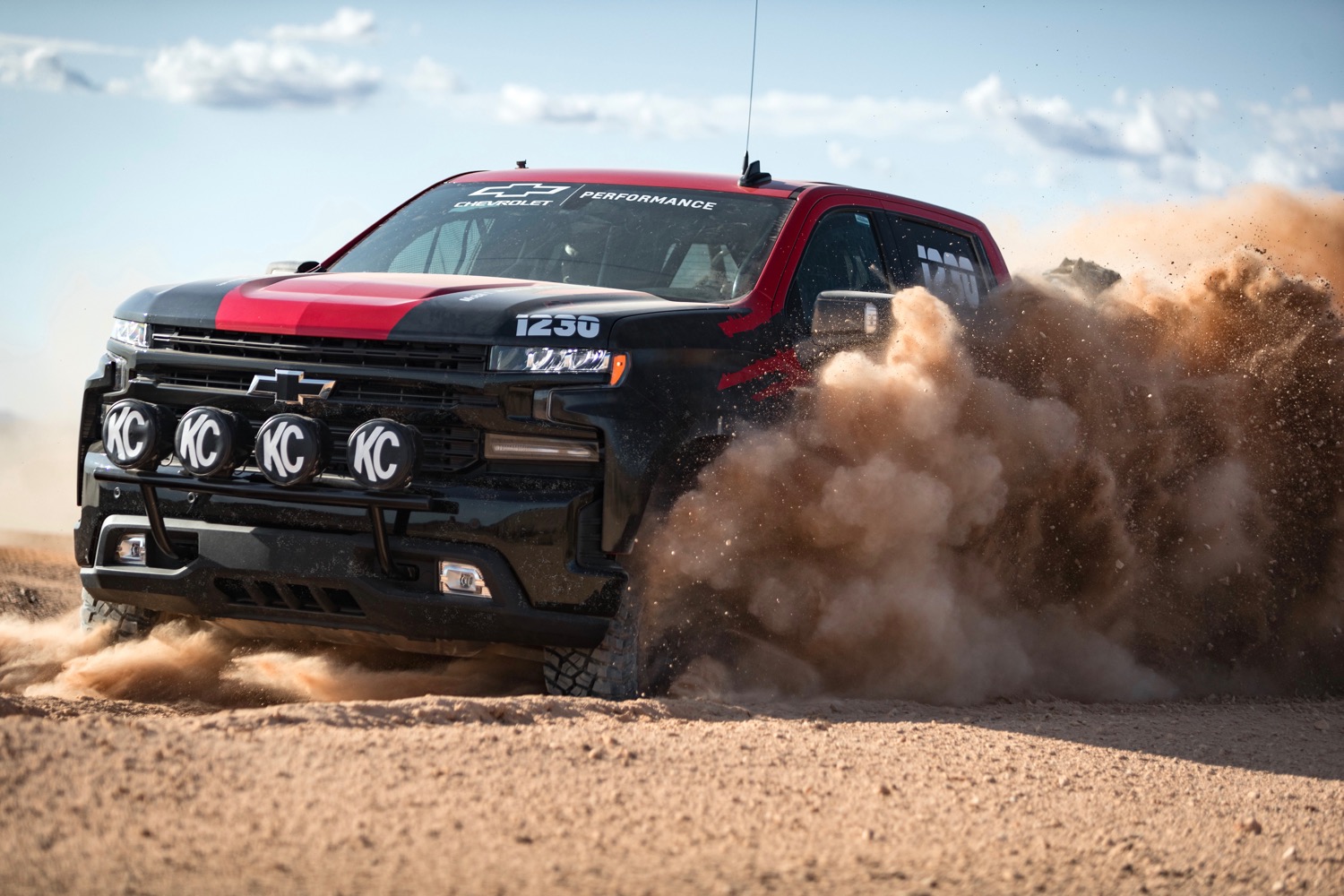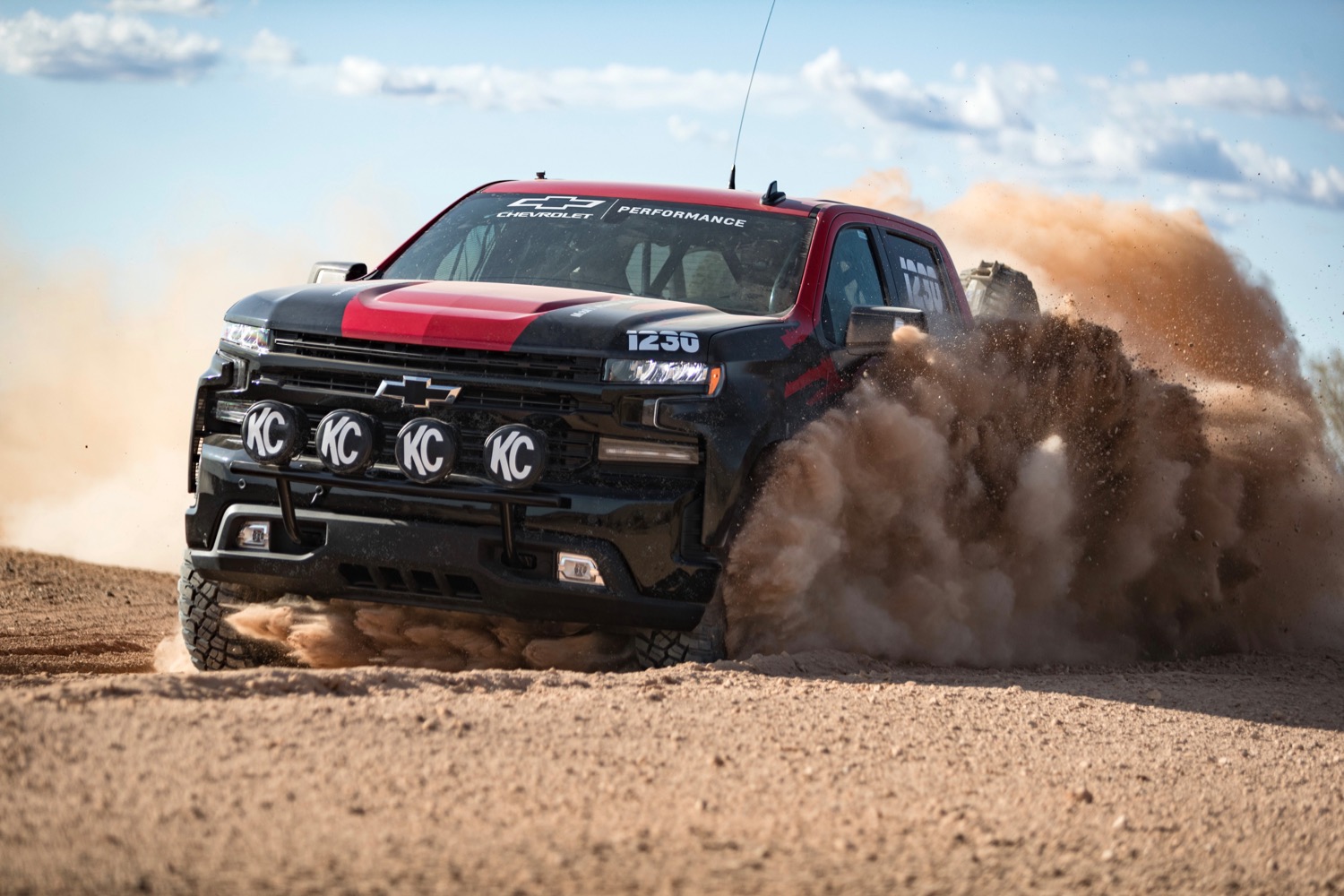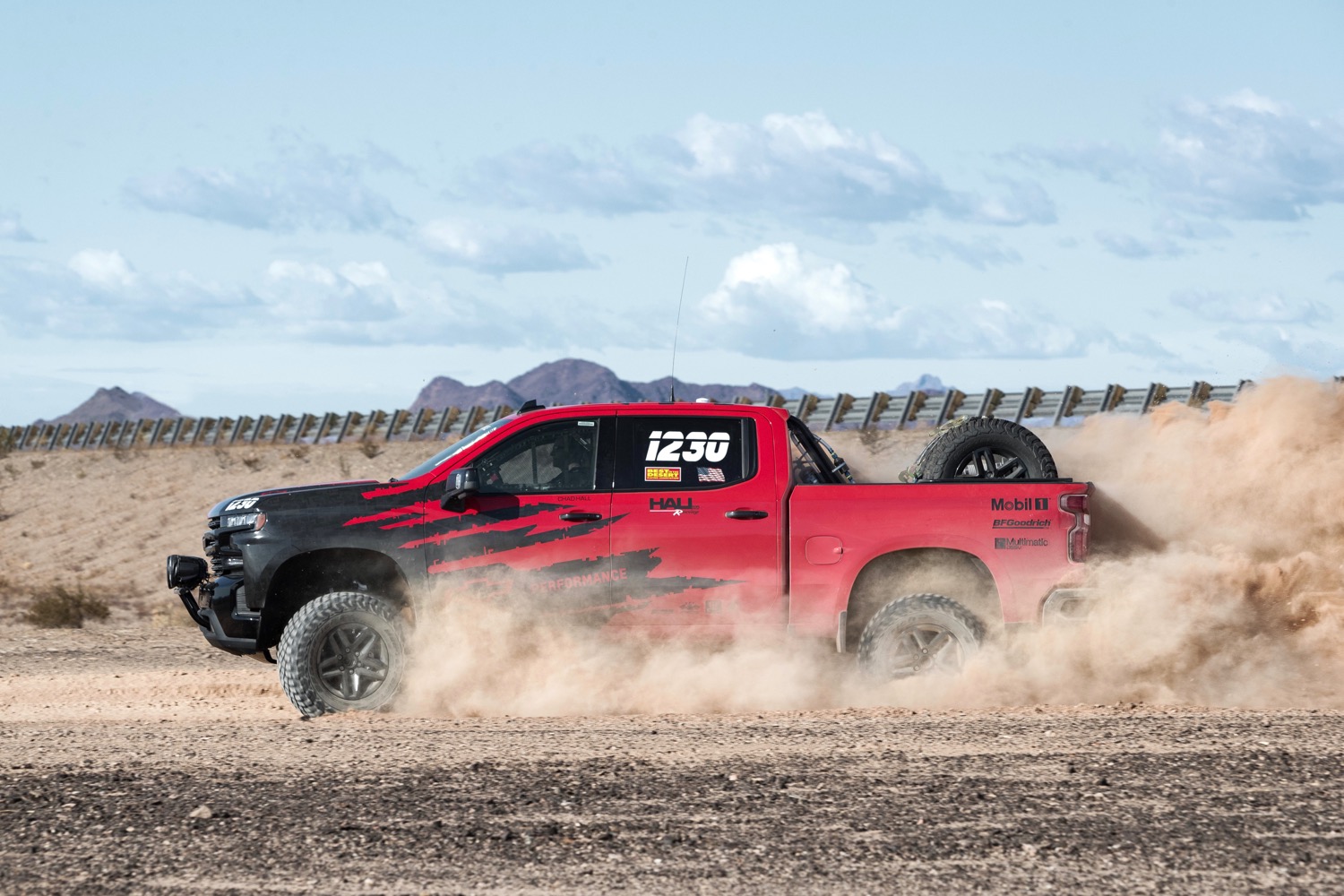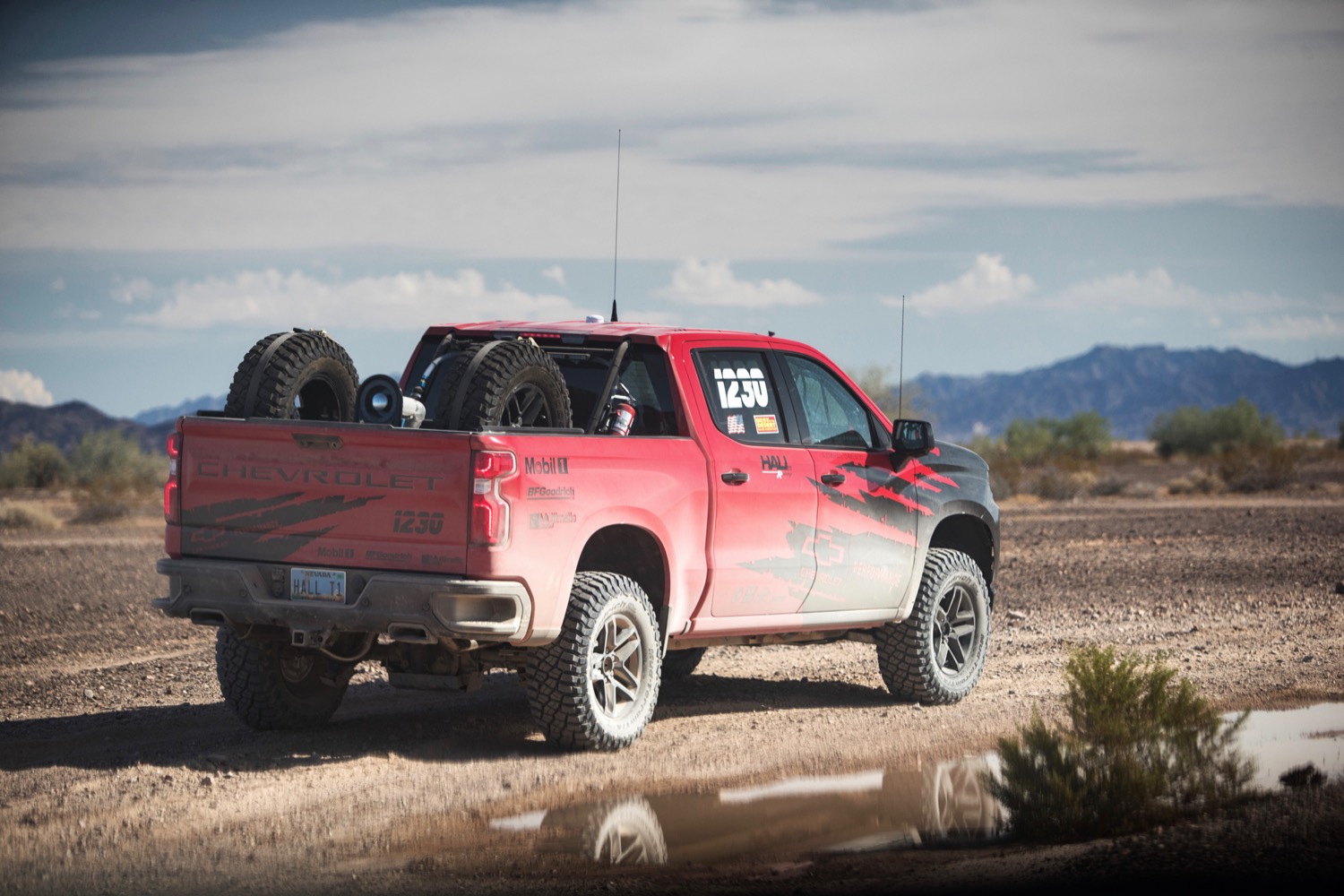Automakers and owners like to brag about the toughness of their pickup trucks, but how many of those trucks actually get put to the test? The Chevrolet Silverado will make its off-road racing debut later this month, running alongside the smaller Chevy Colorado in Nevada’s Laughlin Desert Classic. The race will not only prove the Silverado’s off-road credentials but will give engineers valuable data on what breaks first in tough conditions.
“Off-road racing is just brutal on vehicles,” Mark Dickens, General Motors’ chief engineer for government programs, performance variants, parts, and motorsports, said in a statement. “A single race puts more wear and tear on trucks than most vehicles will experience in years. That makes off-road racing a valuable test bed to evaluate new components.”
The Silverado race truck started out as an LT Trail Boss model, with a 6.2-liter V8 engine and 10-speed automatic transmission. The four-wheel-drive Trail Boss comes with some off-road upgrades, but engineers took things even further for racing. The suspension got a complete makeover, with front and rear jounce shocks and a set of Multimatc Dynamic Suspensions Spool Valve (DSSV) dampers. These dampers, which can react more quickly to the up and down motion of a wheel than conventional versions, are already used in the Chevy Colorado ZR2, but they aren’t available on the Silverado. Chevy’s use of DSSV dampers on the Silverado race truck raises some interesting possibilities.
Chevy doesn’t offer a hardcore off-road version of the Silverado to rival the Ford F-150 Raptor, instead focusing on the smaller Colorado ZR2. A set of DSSV dampers and the Silverado’s V8 seems like a solid foundation for a Raptor rival. Chevy hasn’t given any indication that it’s planning a new Silverado off-roader, but use of the DSSV dampers on the race truck indicates that engineers may be thinking about it.
The Silverado will make its racing debut at the Laughlin Desert Classic alongside a refreshed Colorado ZR2 race truck. The Chevy duo will also compete in six off-road races in 2020. Meanwhile, the stock 2020 Silverado gets some new tech features and an optional diesel engine.
Editors' Recommendations
- Off-roading in a plug-in Jeep is like hiking with A/C
- The best off-road vehicles
- Ford Bronco R off-road racer shares DNA with upcoming production model
- 2021 Chevrolet Colorado gets a tougher exterior, but what’s underneath?
- Convertible, race car versions of 2020 Chevy Corvette Stingray coming this fall






